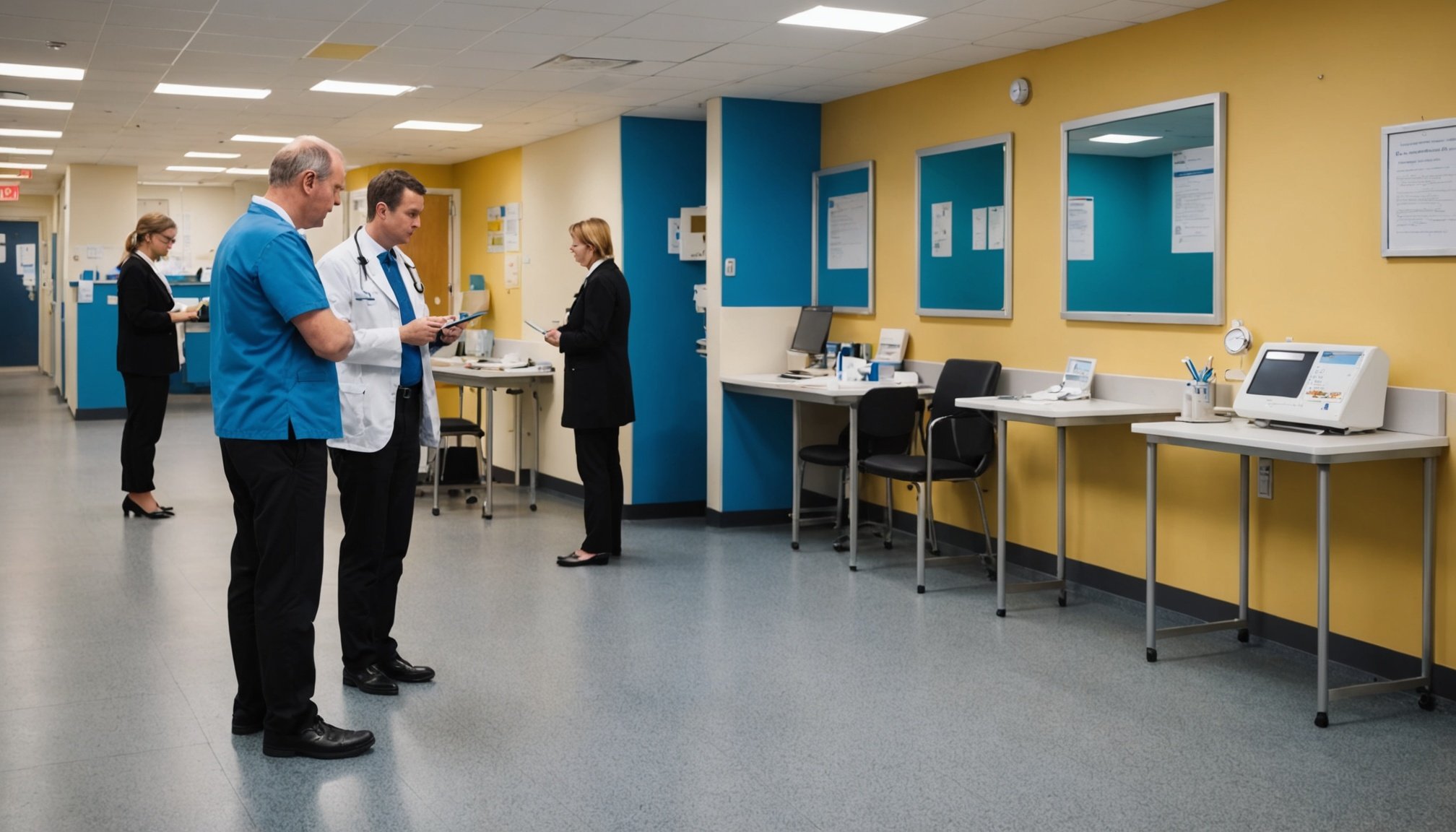The issue of waiting times in healthcare is a significant concern for patients across the UK. With the NHS facing increasing pressures, especially post-COVID-19, it is essential to explore effective strategies that can reduce these wait times without compromising the quality of care. As healthcare professionals, understanding how to manage patient flow and enhance efficiency in hospital settings is paramount. This article delves into several methods that can be implemented to improve the overall healthcare experience, focusing on the importance of support, efficient management, and innovative treatment options. We will also examine insights from PubMed and other reputable sources to provide a well-rounded perspective.
Implementing Efficient Patient Management Systems
One of the most effective strategies for reducing waiting times in healthcare facilities is the implementation of efficient patient management systems. Such systems allow for better organization of appointments and resources, ultimately enhancing the overall patient experience.
Topic to read : How can UK health professionals leverage social media to promote health education and awareness?
A key aspect of effective patient management is the use of technology. Electronic Health Records (EHR) can significantly streamline the process of accessing patient data, leading to quicker assessments and treatment plans. When healthcare professionals have immediate access to comprehensive patient histories, they can make informed decisions more rapidly, reducing the overall waiting time for subsequent appointments.
Moreover, utilizing automated scheduling systems can help manage appointments more effectively. These systems can prioritize urgent cases and optimize the scheduling of elective treatments, ensuring that patients who need prompt care receive it without unnecessary delays. By automating reminders and confirmations, healthcare facilities can mitigate the number of missed appointments, which often contribute to longer waiting periods.
Also to read : What role does mentorship play in the professional development of UK health professionals?
Involving patients in their own care management can also be beneficial. Educating them on the process and what to expect can reduce anxiety and improve cooperation. For instance, equipping patients with the information needed to prepare for their treatment can streamline the procedure and enhance efficiency.
Finally, regular audits of the patient management processes can identify bottlenecks or inefficiencies. By continually assessing and refining the management approach, healthcare providers can adapt to changing demands, further reducing waiting times and improving overall healthcare delivery.
Enhancing Staff Training and Development
Enhancing the capabilities of healthcare staff is essential for improving service delivery and reducing waiting times. Staff training and development programs play a critical role in equipping healthcare professionals with the necessary skills to manage their workload effectively.
Investing in comprehensive training helps staff understand the complexities of healthcare delivery and the importance of their roles in minimizing patient wait times. Regular workshops that focus on time management, communication skills, and clinical efficiencies can empower healthcare providers to deliver high-quality care in a timely manner.
Moreover, fostering a culture of teamwork within healthcare settings is crucial. When staff members work collaboratively, they can support one another, share responsibilities, and ensure that patients receive prompt care. This approach not only leads to improved patient outcomes but also enhances job satisfaction among staff, which can reduce turnover rates.
In addition to training, utilizing performance metrics can help identify areas where staff may need additional support. By analyzing data on wait times and treatment outcomes, healthcare facilities can pinpoint specific challenges and develop targeted training initiatives to address them.
Further, encouraging continuous professional development through ongoing education and certifications can keep staff updated on best practices and new treatment methods. A well-informed workforce is better equipped to manage patients efficiently and effectively. Thus, enhancing staff training and development is a vital strategy for reducing wait times and improving the overall quality of care.
Optimizing Resource Allocation
Optimizing resource allocation within healthcare facilities is a strategic approach that directly impacts waiting times. Effective allocation of resources ensures that healthcare services meet demand without overwhelming staff or facilities.
One way to achieve optimal resource allocation is through careful analysis of patient flow and demand patterns. By examining historical data on patient visits, healthcare providers can better predict peak times and adjust staffing and resources accordingly. For instance, if certain departments experience higher traffic during specific periods, increasing staff levels or extending hours of operation can help manage the influx of patients.
Employing a triage system can also be beneficial. By assessing the urgency of a patient’s condition upon arrival, healthcare facilities can prioritize those who require immediate attention. This not only helps reduce overall waiting times but also ensures that critical cases receive the necessary care swiftly.
Additionally, leveraging technology for resource management can enhance efficiency. Advanced scheduling systems and patient management software can optimize the use of examination rooms, equipment, and medical personnel. By analyzing real-time data, healthcare facilities can make informed decisions about resource allocation, minimizing downtime and maximizing patient throughput.
Finally, fostering partnerships with other healthcare organizations can aid in resource optimization. For example, collaboration with community health services can allow for better distribution of patients, thereby reducing pressure on hospitals during peak times. By adopting a holistic approach to resource management, healthcare providers can significantly improve their responsiveness and reduce waiting times for patients.
Adopting Innovative Treatment Protocols
Adopting innovative treatment protocols is essential in the quest to reduce waiting times in healthcare facilities. By integrating new methods and technologies, healthcare providers can enhance the efficiency of patient care delivery.
One innovative approach involves the use of telemedicine. Virtual consultations allow healthcare professionals to assess and manage patients remotely, significantly reducing the number of in-person visits required. This is particularly beneficial for follow-up appointments and routine check-ups. By shifting some of the treatment burden to telehealth, healthcare facilities can alleviate congestion in physical locations, leading to shorter wait times for those who need immediate, in-person care.
Furthermore, implementing rapid assessment protocols can expedite the process of diagnosis and treatment. By streamlining clinical processes and utilizing evidence-based practices, healthcare teams can enhance their response times. For instance, employing standardized clinical pathways for common conditions can help guide staff in providing care efficiently and consistently.
In addition to these methods, fostering a culture of innovation within healthcare teams can also lead to new strategies for managing patient care. Encouraging staff to suggest improvements or pilot new ideas can result in creative solutions that significantly enhance patient flow and reduce wait times.
Lastly, integrating artificial intelligence (AI) into treatment planning can assist in predicting patient needs and optimizing resource allocation. AI can analyze vast amounts of data to identify trends and inform decision-making, thus enabling healthcare professionals to anticipate and address potential bottlenecks before they affect patient care. By adopting innovative treatment protocols, healthcare facilities can not only improve patient experiences but also ensure that essential care is delivered promptly.
In conclusion, reducing waiting times in healthcare facilities requires a multifaceted approach that encompasses efficient patient management systems, enhanced staff training, optimized resource allocation, and the adoption of innovative treatment protocols. By focusing on these strategies, UK health professionals can significantly improve the patient experience and ensure timely access to necessary care. The integration of technology, effective communication, and continuous improvement initiatives are pivotal in achieving these goals. As the healthcare landscape continues to evolve, a proactive and adaptive approach will be essential in meeting the needs of patients and delivering high-quality services consistently.











